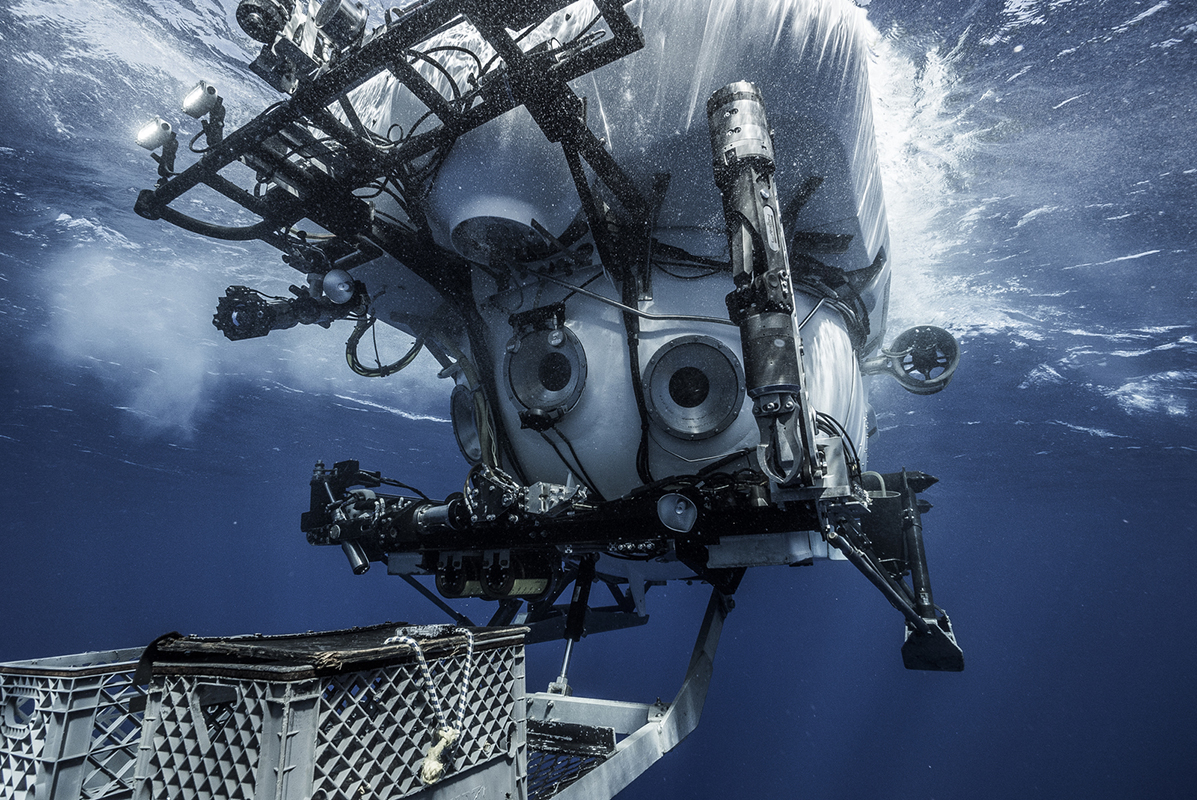Rare Sea Life Found in Mysterious Underwater 'Mountains'

Scientists recently traveled thousands of feet below the ocean's surface to explore underwater mountain ranges of cone-shaped dormant and active volcanoes with peaks rising 9,843 feet (3,000 meters) above the seafloor off the coast of Hawaii.
Living along these seamounts, Conservation International researchers spied enough quirky and unusual marine life to fill a Dr. Seuss book.
Their findings provide a window into some of the most mysterious spots in the ocean: Tens of thousands of seamounts extend across the world's oceans, but many have never been explored, and scientists are only just beginning to discover the complexity of the ecosystems they support, one of the expedition scientists told the Conservation International (CI) blog Human Nature. [In Photos: Seamount Dives Reveal Rare Marine Life]
Deep dives
Using twin submersibles named Pisces IV and Pisces V, equipped with multiple cameras, scientists led by CI dove to three seamounts: Cook seamount on Sept. 6, McCall seamount on Sept. 7, and Lō’ihi seamount on Sept. 8. The Cook and McCall seamounts are part of a region known as the Geologist Seamounts — a ring of ancient volcanoes estimated to be about 80 million years old, according to a CI statement emailed to Live Science.
In the dark, cold and high-pressure ocean depths, the researchers found that each seamount had its own distinct and diverse ecosystem, they described Sept. 16 in Human Nature. From the submersibles, scientists observed rare and unusual creatures, such as a floppy-"eared" dumbo octopus, kitefin sharks, cutthroat eels and several unusual species of coral that could be new to science, including a colorful variety that the researchers nicknamed "purple haze."
In a video captured by the Pisces V submersible on Sept. 6, a dumbo octopus gracefully glides above the seafloor at the Cook seamount, its body color subtly shifting as it swims. One of the observing scientists can be heard in the video remarking that the octopus appeared to be molting, since folds of what looked like shedding skin were visible on its body.
A Pacific sleeper shark estimated to measure between 7 and 8 feet (2.1 and 2.4 m) in length appeared in another video filmed by Pisces V at the Lō’ihi seamount on Sept. 8. As the shark slowly passed in front of the camera, it prompted excited exclamations of "Come see this!" and "Oh, wow!" from scientists watching the animal through the cameras.
Sign up for the Live Science daily newsletter now
Get the world’s most fascinating discoveries delivered straight to your inbox.
Expeditions like this one will improve scientists' understanding of the role that seamounts play in ocean ecology, and could inform future policy decisions affecting seamount conservation, CI officials told Live Science in the email.
Original article on Live Science.

Mindy Weisberger is an editor at Scholastic and a former Live Science channel editor and senior writer. She has reported on general science, covering climate change, paleontology, biology and space. Mindy studied film at Columbia University; prior to Live Science she produced, wrote and directed media for the American Museum of Natural History in New York City. Her videos about dinosaurs, astrophysics, biodiversity and evolution appear in museums and science centers worldwide, earning awards such as the CINE Golden Eagle and the Communicator Award of Excellence. Her writing has also appeared in Scientific American, The Washington Post and How It Works Magazine. Her book "Rise of the Zombie Bugs: The Surprising Science of Parasitic Mind Control" will be published in spring 2025 by Johns Hopkins University Press.












